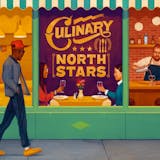A lot of people make wine-buying decisions based on the label. Some estimates for such single-bottle purchases run as high as 75 percent.
Here's the problem: Most consumers are doing it backwards, and not because they're choosing the bottle with the pretty unicorn on the front. The most useful information, it turns out, almost invariably is on the smaller back label.
Yes, the brand, grape and region names on the front are important, and the design can convey a good bit about the wine or winery (including the fact that too much money was spent on the outside vs. what's inside the bottle). But the tiny type on the back can be more helpful.
For instance, "Estate Bottled" usually is a good sign. It means the winery controls 100 percent of the grapes used and did all the viticultural work (crushing, fermenting, aging) at its own site. Thus, it is responsible for both parts of the term "quality control."
More wineries have been putting descriptors on the back, and those can range from flowery meaninglessness (evoking verdant landscapes or aromas of pencil lead) to something actually helpful ("full-bodied," "a touch of effervescence"). I'm especially enamored of wineries that include some food-pairing tips on the back label. Many riesling labels now contain a helpful sweetness gauge.
One of my favorite California wineries, Ridge, has added an ingredients list ("calcium carbonate, 1.4% water addition, minimum effective SO2") to its back labels. It would be beyond swell if that started a movement, but I'm not holding my breath.
But perhaps the most beneficial information on those back labels involves the importer, which might have immediate economic benefits and long-range enjoyment advantages.
If the importer is based in Minnesota, you should be saving a bit of money. After all, you're skipping a "tier" in the supply chain when the importer and distributor are the same company. So even though there are costs involved in both importing and distributing, companies doing both tend to provide bigger bang for the buck. Such local companies range from small (Z, Amara, Domace Vino), to medium-sized (New France, the Wine Company) to ginormous (Prestige Wine Group).



